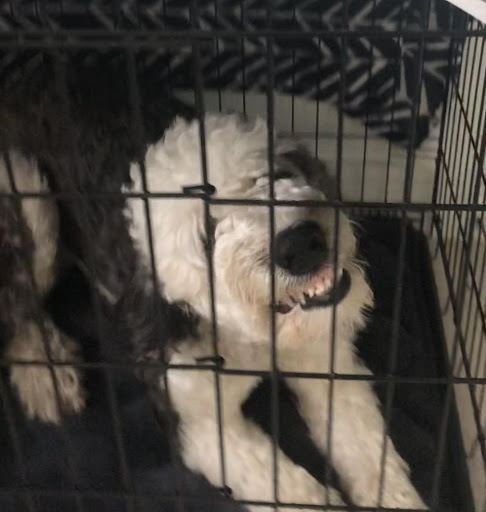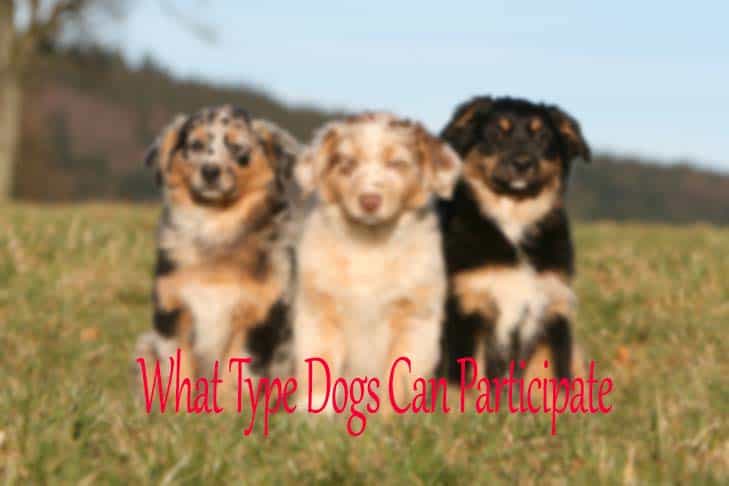Have you ever wondered, “Why does my dog show his teeth when happy?” Understanding your pup’s grinning behavior can reveal fascinating insights into his emotions and communication style. Contrary to what one might assume, when a dog displays his teeth in a relaxed, happy manner, it’s often a sign of joy and contentment rather than aggression. This behavior, known as a “submissive grin,” is a canine way of expressing friendliness and positivity. By decoding this behavior, you can deepen your bond with your furry companion and learn to appreciate the subtle ways in which dogs convey their happiness. Let’s delve into the reasons behind why dogs flash their pearly whites when they’re feeling their best.
Understanding your dog’s facial expressions
Understanding your dog’s facial expressions is crucial for decoding their emotions and behavior. When your dog shows his teeth when happy, it could be a sign of a submissive grin, indicating they are content and not showing aggression. This behavior often involves a relaxed body posture and soft eyes.
Submissive Grin
Dogs may show their teeth in a submissive grin to communicate their friendly and non-threatening intentions. This behavior is common when they greet familiar humans or other dogs. It’s essential to differentiate between a submissive grin and aggression based on their body language.
Relaxed Body Language
When dogs are happy and showing their teeth, they usually exhibit a relaxed body posture. They may wag their tail, have loose muscles, and overall appear at ease. Observing their overall body language alongside their facial expressions can provide a better understanding.

Reasons why dogs show their teeth when happy
Seeing your dog show its teeth in what looks like a smile can be confusing at first. However, dogs often exhibit this behavior in various situations, including when they are happy. This behavior is known as a “submissive grin” or a “play face.”
The meaning behind the toothy smile
Dogs show their teeth when happy as a way to communicate their positive emotions. It is a display of submission and affection rather than aggression. This behavior is more common in some breeds than others, but it generally indicates a happy and relaxed state of mind.
When a dog shows its teeth in the presence of its owner or another familiar individual, it’s a sign of trust and comfort. Your pup may also exhibit this behavior during playtime or when feeling content in a particular situation.
Body language cues to look for
Along with showing their teeth, happy dogs may exhibit other body language cues such as relaxed ears, a wagging tail, and a soft, loose posture. These signals indicate that your dog is feeling secure and content in the moment.
Body language cues in dogs
Understanding your dog’s body language can help you better communicate with your furry friend. Dogs have various ways of expressing their emotions and intentions through body cues.
Teeth Showing
Dogs may show their teeth when they are happy or excited. This behavior, known as the “submissive grin,” is a sign of joy and not aggression. It’s often accompanied by a wagging tail and a relaxed body posture.
Tail Wagging
The tail wagging of a dog can indicate their mood. A fast wagging tail usually means the dog is happy, while a slow wag could indicate uncertainty or caution. Wagging to one side might suggest curiosity or playfulness.
Ear Position
Pay attention to your dog’s ear position. Ears held back could indicate fear or submission, while ears perked up suggest alertness or excitement. Drooping ears might imply a relaxed or tired state.
Eye Contact
Direct eye contact in dogs can convey different messages. A soft gaze with relaxed eyes indicates affection, while a tense stare might signal aggression or dominance. Avoiding eye contact could mean fear or submission.

Signs of a Happy Dog
Understanding why dogs show their teeth when happy is crucial for decoding their grinning behavior. A happy dog exhibits various signs that indicate its joy and contentment.
1. Tail Wagging
One of the most recognizable signs of a happy dog is joyful tail wagging. The wagging tail signifies excitement and happiness in dogs.
2. Relaxed Body Language
Happy dogs often display relaxed body language such as a loose posture, ears in a natural position, and a relaxed face without any signs of tension.
3. Playfulness
Playfulness is a common trait of a happy dog. They may engage in playful behaviors like zoomies, fetching toys, or play bowing to show their happiness.
4. Bright Eyes
A happy dog’s eyes are often bright and alert. They may have a sparkle that indicates their joy and contentment.
How to respond to your dog’s grinning behavior
When your dog shows his teeth while appearing happy, it can be misinterpreted as aggression by some individuals. However, this behavior is often a sign of contentment and should be met with the right response to ensure a positive interaction with your furry friend.
Understanding Your Dog’s Grinning
It’s crucial to recognize that a dog’s grinning behavior is different from a snarl or growl. The context and accompanying body language can help you differentiate between a happy grin and a sign of aggression.
Responding Appropriately
When your dog grins out of happiness, respond accordingly by smiling back and speaking to them in a soothing voice. This positive reinforcement can strengthen your bond with your pup and reassure them that their behavior is appreciated.
Additionally, you can engage in playtime or offer treats as a way to reciprocate their joyful expression.
Frequently Asked Questions
- Why does my dog show his teeth when happy?
- Dogs often show their teeth when they are happy or excited. This behavior can be a sign of submission, playfulness, or simply a way for them to communicate their emotions.
- Is it safe when my dog shows his teeth while grinning?
- In most cases, when a dog shows his teeth in a grinning manner when happy, it is completely safe and normal behavior. It’s their way of expressing joy and excitement.
- Can showing teeth be a sign of aggression in dogs?
- While showing teeth can sometimes be a sign of aggression in dogs, especially when accompanied by other aggressive body language, in the context of happiness or playfulness, it is usually a benign and friendly gesture.
- How can I differentiate between a happy grin and an aggressive display of teeth?
- To differentiate between a happy grin and an aggressive display of teeth, observe your dog’s overall body language. A wagging tail, relaxed posture, and playful demeanor usually indicate a happy grin, while a stiff body, raised hackles, and fixed stare may signal aggression.
- Should I be concerned if my dog shows his teeth when greeting me?
- Showing teeth when greeting can be a friendly gesture in dogs, known as a ‘smile’. If your dog shows his teeth in a relaxed manner while wagging his tail when greeting you, it is typically a sign of affection rather than aggression.
Unlocking the Mystery: Why Does My Dog Show His Teeth When Happy?
In conclusion, your dog’s grinning behavior, where he shows his teeth when happy, is a natural and positive expression rooted in their evolutionary past. This behavior signifies your pup’s joy and contentment, akin to a human smile. Understanding this canine body language can deepen your bond with your furry friend, fostering trust and communication. By decoding this behavior, you can respond appropriately, reciprocating the happiness your dog feels. Remember, each dog is unique, so observe your pup’s overall body language and context to interpret their toothy grin accurately. Embrace this heartwarming gesture as a sign of your dog’s happiness and affection.



